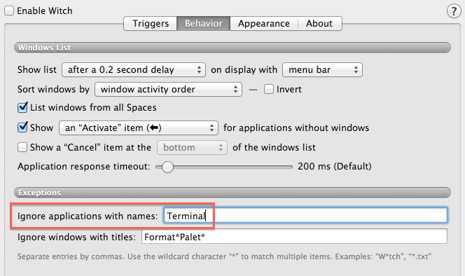Modifying the Info.plist is not really practical most of the time. It also removes the menu bar of the application. If the application is signed, editing the Info.plist usually breaks the code signature, so that for example the application won't be allowed to access items from the login keychain automatically. Some applications like TextEdit and Chess crash on launch if their Info.plist has been modified. The Info.plist might also get replaced if you upgrade the application.
(If you have seen different variants of <key>LSUIElement</key><string>1</string>, both LSUIElement and NSUIElement work, and <string>1</string> can also be replaced with <integer>1</integer> or <true/>. See grep -A1 [LN]SUIElement /Applications/*/Contents/Info.plist.)
Witch has an option to exclude applications by name:

I mostly switch between applications by using keyboard shortcuts or with Alfred. I have disabled ⌘⇥ and ⇧⌘⇥ with KeyRemap4MacBook:
<autogen>__KeyToKey__ KeyCode::TAB, VK_COMMAND | ModifierFlag::NONE,
KeyCode::VK_NONE</autogen>
<autogen>__KeyToKey__ KeyCode::TAB, VK_COMMAND | VK_SHIFT |
ModifierFlag::NONE, KeyCode::VK_NONE</autogen>

Related, and another. – Daniel Beck – 2011-06-15T06:40:14.127